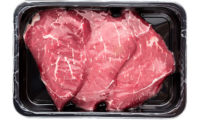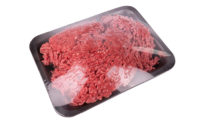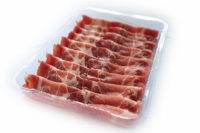The food marketplace is truly a vivid reflection of our culture, demographics and economics. Because retail packaging occupies an essential role for processors and retailers as a direct interface with consumers, its formats must adjust to stay in step with notions of how an increasingly diverse shopper base wants fresh and further processed meats served to them in retail display cases.
Recently, I heard modified atmosphere packaging (MAP), a fixture in everyone’s meat case, is facing growing challenges from vacuum formats such as flex/flex — film on film — and vacuum skin packaging (VSP). No worries; this is neither life-threatening to MAP nor even headline news, but it may illustrate how a ubiquitous packaging format’s market function may be permanently altered because of changing marketing imperatives.
Branding is in the midst of a rebirth. Every processor and retailer understands the bottom-line impact powerful brands deliver. It is why they look for products that differentiate themselves through convenience, freshness, flavor and visual appeal and why they look to packaging to accentuate them.
“Do you want to put your new, premium meatloaf in a pack format that’s been around 30 years, or do you want to try and kick it up a notch? ,” says a packaging executive with several decades of industry experience. “I’m not seeing anyone putting any premium brands in MAP any longer.”
He sees MAP’s role settling to more “value markets.” Even for ground beef, the veritable center of the MAP universe, he sees branded products that carry added-value messages such as organic, grass-fed or locally produced being better suited for flex/flex packs because they look special in addition to delivering longer shelf life.
These packages are already popping up in several specialty supermarket chains in various regions of the country. He also points out that no matter the product, there is more effective portion control and less waste, points of interest to vast numbers of Baby Boomers and empty-nesters, because the packages can come three up and one can be torn off to use and the rest thrown into the freezer for later. While evolving culture, lifestyle and demographics continue to fuel change, he acknowledges the reality.
“A lot of tray sealers are around, and those assets don’t get used if you don’t have a pre-made tray. You equip your business to go in one direction and you try to keep it like that if you can,” he says. Even if the writing is on the wall for MAP, no one makes an impulsive decision to change packaging formats completely because most often new and expensive equipment systems are required. Perhaps they use a co-packer or purchase a single line and take a measured approach.
All that said, MAP is not in danger. There will always be MAP at retail, but its space is being reshaped, if our packaging executive is correct.
“Flex/flex has been vacant in the U.S., but it’s a format that’s being adopted by more and more proteins. Not by everyone, but I think it will continue. At the same time I think VSP will be for premium brand products like further processed meats and such.”
Glacial change at its finest. NP






Report Abusive Comment